Balboa Park: The Painted Desert
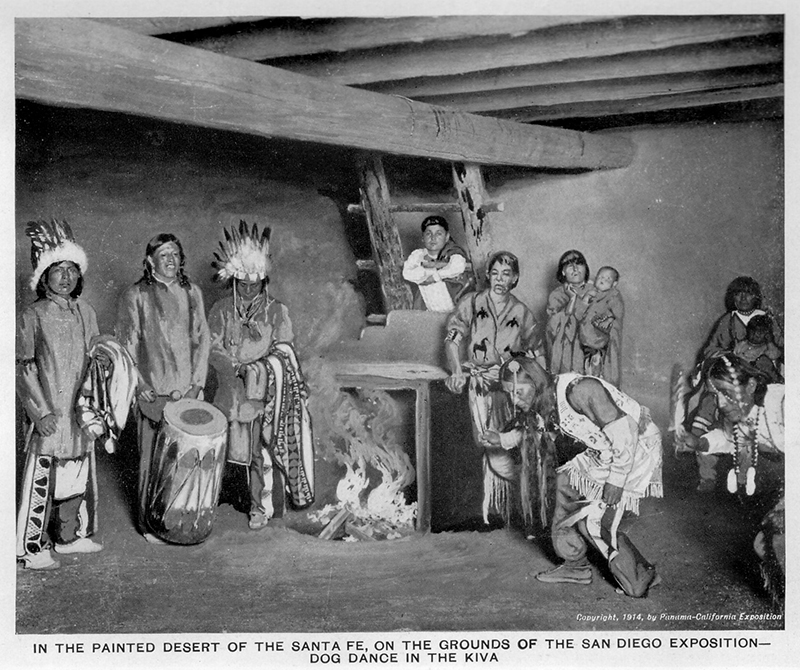
The Painted Desert
It was an idea that captured the imagination. Recreate the Painted Desert of the American Southwest and invite Native American tribes to live in it and demonstrate the Indian way of life. Built by the Santa Fe Railroad for the 1915 Panama-California Exposition and officially named the Painted Desert, the exhibit was called Indian Village by the public. It was developed on a five-acre mesa at the north end of the exposition. Taos, Zuni, Apache, Navajo, Havasupai, Hopi, Tewa, and Tiwa were all represented, and many tribal members actually lived on the exhibit grounds during
the fair.

International Panama-California Exposition brochure by Santa Fe (Railroad) and San Diego
At the time, it was not an unusual display, as fairs in Chicago, Buffalo, and St. Louis had all featured similarly themed attractions. City planners and the railway were, of course, interested in showing off San Diego and bringing visitors to the Southwest, so Native American habitat was appealing on many levels.

The exhibit was constructed by Native Americans from New Mexico’s San Ildefonso Pueblo. Materials used included cedar posts, cholla, sagebrush, and yucca. Adobe buildings, hogans, wickiups, kivas, and rock dwellings similar to those in Arizona’s picturesque Painted Desert anchored the village. The popular attraction cost approximately $150,000.

The Tewa from New Mexico demonstrated pottery making and blanket weaving separately in the Indian Arts Building. But, the Tewa refused to live there, finding the Indian Arts Building unsuitable. They lived with other tribes at the Painted Desert, though they continued to use the Indian Arts Building for their demonstrations.
Painted Desert offered many activities. Visitors were treated to eagle, corn, and butterfly dances and there were handsome crafts for sale. On Kite Day, August 2, 1915, one lucky contestant won a prize burro that had been born in the village.

The tribes also named a new baby “Theodore Roosevelt Trujillo” in honor of their “Great White Father.” Roosevelt, himself, visited his namesake and Native American friends, many of whom he knew personally.
After the Exposition closed, the 21st Infantry occupied the Painted Desert. Boy Scouts took possession of it in 1920, relinquishing the area for the 1935 California Pacific International Exposition, where Painted Desert was again featured, though this time not as successfully. The 1935 shows were coarse, lacking respect and dignity of the earlier fair and the exhibit was not continued into 1936. When the second fair ended, the Boy Scouts returned, but once again vacated the site for the military in 1941. In 1946, the area was deemed unsafe and the temporary structures were burned. Six wood and stucco buildings were destroyed, and the Veterans War Memorial Building, constructed in 1948, now stands in their place. DARLENE G. DAVIES
The Santa Fe Railway named its trains Navajo, Chief, and Super Chief. In so doing, it sought to lend an air of dignity and strength to its rail cars. It also hired public speakers, writers, and visual artists to describe and depict Native Americans’ Land of Enchantment, with its Painted Desert and Petrified Forest.

On October 21, 1915, the Hearst International Film Service photographed an imagined recreation of a battle between soldiers and Indians as the Second Battalion of the Twenty-First Infantry feigned storming the Painted Desert. The insensitive footage depicted the slaughter of Native Americans, scenes that were later woven into movie dramas, while still photographs of the recreation appeared in print periodicals. DARLENE G. DAVIES
All photography courtesy of Darlene G. Davies collection
Directory
The Great Panama-California Exposition
1915 Panama-California Exposition
Spreckels Outdoor Organ Pavilion
Gardens of the Panama-California Exposition
Legacy of the Foreign Arts Building
Panama-California Sculpture Court
Commerce and Industries Building

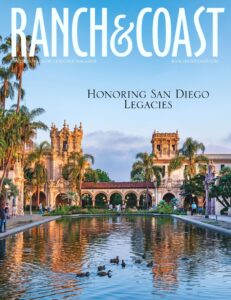


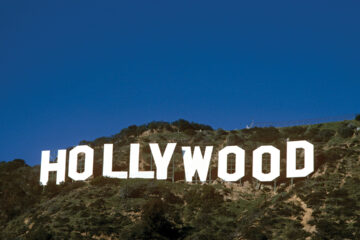

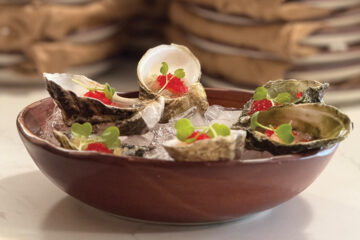
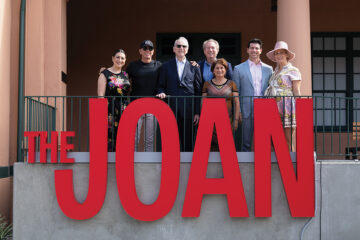
Comments